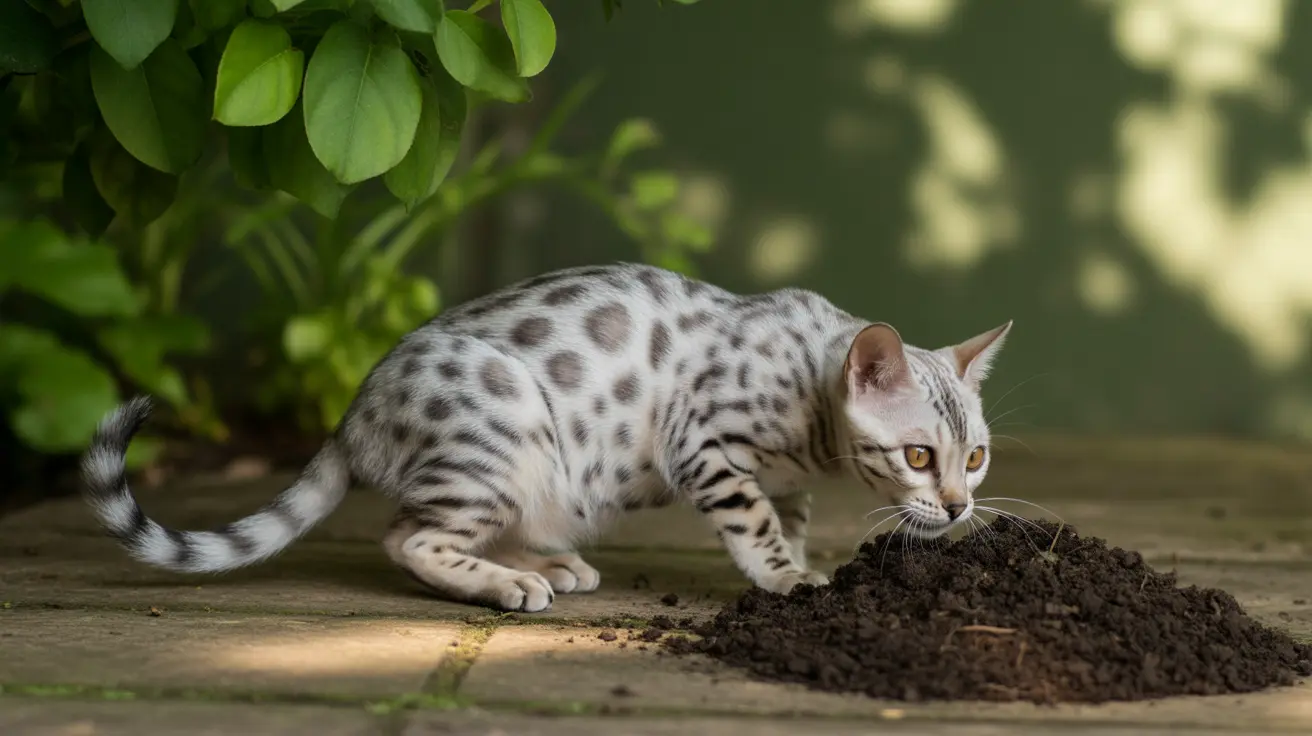Many gardeners seeking natural fertilizer options might wonder about using cat waste in their gardens. While cat feces do contain significant amounts of nutrients that plants need, including nitrogen and phosphorus, there are serious health and safety concerns that make it a risky choice for fertilizing your garden.
In this comprehensive guide, we'll explore the potential benefits and significant risks of using cat poop as fertilizer, and provide safer alternatives for your gardening needs.
Understanding the Nutrient Content of Cat Waste
Cat feces contains impressive levels of essential plant nutrients. In fact, it contains two and a half times more nitrogen than cattle manure and comparable levels of phosphorus and potassium to commercial fertilizers. However, these nutritional benefits come with substantial drawbacks that typically outweigh any potential advantages.
Health Risks and Safety Concerns
Dangerous Parasites and Pathogens
The primary concern with using cat feces as fertilizer is the presence of harmful organisms, particularly Toxoplasma gondii. This dangerous parasite can survive in soil for months and poses serious health risks to humans, especially pregnant women and those with compromised immune systems.
Other common pathogens found in cat waste include:
- E. coli bacteria
- Intestinal worms
- Tapeworms
- Various harmful bacteria
Composting Challenges
While composting might seem like a solution, it's generally ineffective for cat waste. Most home composting systems cannot reach the extremely high temperatures (165°F/73°C) required to kill dangerous pathogens. This makes even composted cat waste potentially hazardous.
Environmental Impact and Soil Considerations
Cat waste can have significant environmental implications when used in gardens. The high ammonia content can damage plants directly, and rainfall can spread pathogens into groundwater and surrounding soil. This contamination can persist for extended periods and affect areas beyond the initial application site.
Safe Alternatives for Garden Fertilization
Instead of using cat waste, consider these safer, effective alternatives for fertilizing your garden:
- Herbivore manure (horse, cow, rabbit)
- Chicken manure (properly composted)
- Commercial organic fertilizers
- Plant-based compost
Proper Cat Waste Disposal
The safest way to handle cat waste is through proper disposal methods:
- Bag and dispose of in household trash
- Use a dedicated pet waste disposal system
- Consider biodegradable, flushable cat litter options
- Never add to regular compost bins or garden soil
Frequently Asked Questions
Is cat poop safe to use as fertilizer in my garden?
No, cat poop is not safe to use as fertilizer due to dangerous parasites and pathogens that can survive in soil for months and potentially infect humans.
What are the health risks of using cat feces as fertilizer?
The main risks include exposure to Toxoplasma gondii, E. coli, intestinal worms, and other harmful bacteria. These pathogens can cause serious illness, particularly in pregnant women and immunocompromised individuals.
Can I compost cat poop for growing edible plants?
No, composting cat poop for edible plants is strongly discouraged. Even high-temperature composting may not eliminate all pathogens, making it unsafe for food gardens.
How should I safely dispose of or compost cat waste?
The safest method is to bag cat waste and dispose of it in household trash. If composting is attempted, it should only be for non-edible plants using a specialized high-temperature system with clear labeling.
Are there safer alternatives to cat poop for fertilizing plants?
Yes, safer alternatives include properly composted herbivore manure (from horses, cows, or rabbits), chicken manure, and commercial organic fertilizers.
Conclusion
While cat waste does contain beneficial nutrients, the serious health risks and environmental concerns make it unsuitable as a fertilizer. Instead, focus on safer, proven alternatives that will nourish your garden without putting your health at risk. Remember, proper disposal of cat waste is essential for both environmental and public health.






